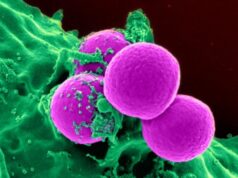Autism and cancer share more than 40 risk genes, suggesting that common mechanisms underlying the functions of some of these genes could conceivably be leveraged to develop therapies not just for cancer but for autism as well, an extensive assessment by researchers with the UC Davis MIND Institute and Comprehensive Cancer Center has found.
The authors identified 43 specific genes with autism susceptibility that also have an association with cancer.
“This striking coincidence of a remarkably large number of genes implicated in both autism spectrum disorder and cancers has not been previously highlighted in the scientific literature,” said Jacqueline Crawley, MIND Institute distinguished professor and endowed chair. “Potentially common biological mechanisms suggest that it may be possible to repurpose drug treatments for cancer as potential therapeutics for neurodevelopmental disorders.”
“Autism and Cancer Shared Risk Genes, Pathways and Drug Targets,” is published online in Trends in Genetics, a Cell Symposia publication. Crawley collaborated on the work with professor and chair of the UC Davis Department of Microbiology and Molecular Genetics Wolf-Dietrich Heyer, who is affiliated with the Cancer Center and Janine LaSalle, professor of medical microbiology and immunology, who is associated with the MIND Institute.
“Autisms” are best conceptualized like cancers, the authors write: in the plural. Like cancers, the behaviorally defined condition encompasses a broad range of putative causes, symptoms and outcomes.
Find your dream job in the space industry. Check our Space Job Board »
Included in the dozens of genes implicated in both cancer and autism are genes for relatively rare syndromes, such as Rett syndrome and tuberous sclerosis, whose sufferers experience an array of physical and neurological symptoms, including intellectual disability, as well as communication deficits characterized as autism.
What does tumor cell proliferation have in common with synapse formation and brain development?
“Errors associated with genome maintenance during fetal life may occur at critical time periods for [brain development] resulting in neurodevelopmental disorders,” said Heyer, “whereas errors more commonly occur during adult life in cell types susceptible to tumors.”
“Genes encoding nuclear proteins involved in epigenetic functions were frequently shared between cancer and ASD, implicating the importance of aberrant gene regulation in both disease states,” La Salle said.
Considerable translational value can be gained from a new focus on understanding the genetic commonalities of autisms and cancers.
“It may be possible to repurpose available cancer drugs with reasonable safety profiles as targeted treatments for ASD,” the authors write. “Stratifying individuals with ASD who harbor a risk gene for autism that is also a risk gene for cancer may enable therapeutic development of personalized medicines based on the specific causal mutation.”
The concept for their Forum piece in Trends in Genetics grew out of a Cancer Research Symposium at UC Davis in 2014 “Common Themes and Mechanisms in Cancer and Neurodevelopmental Disorders.” Organized by Ralph de Vere White, director of the UC Davis Comprehensive Cancer Center, and Leonard Abbeduto, director of the UC Davis MIND Institute, the interdisciplinary symposium sparked discussions between Heyer, LaSalle and Crawley, demonstrating the strongly collaborative interactions of UC Davis faculty across disciplines.
This article originally appeared at University of California – Davis Health System.
Journal References:
- Jacqueline N. Crawley, Wolf-Dietrich Heyer, Janine M. LaSalle. Autism and Cancer Share Risk Genes, Pathways, and Drug Targets. Trends in Genetics, 2016; 32 (3): 139 DOI: 10.1016/j.tig.2016.01.001










